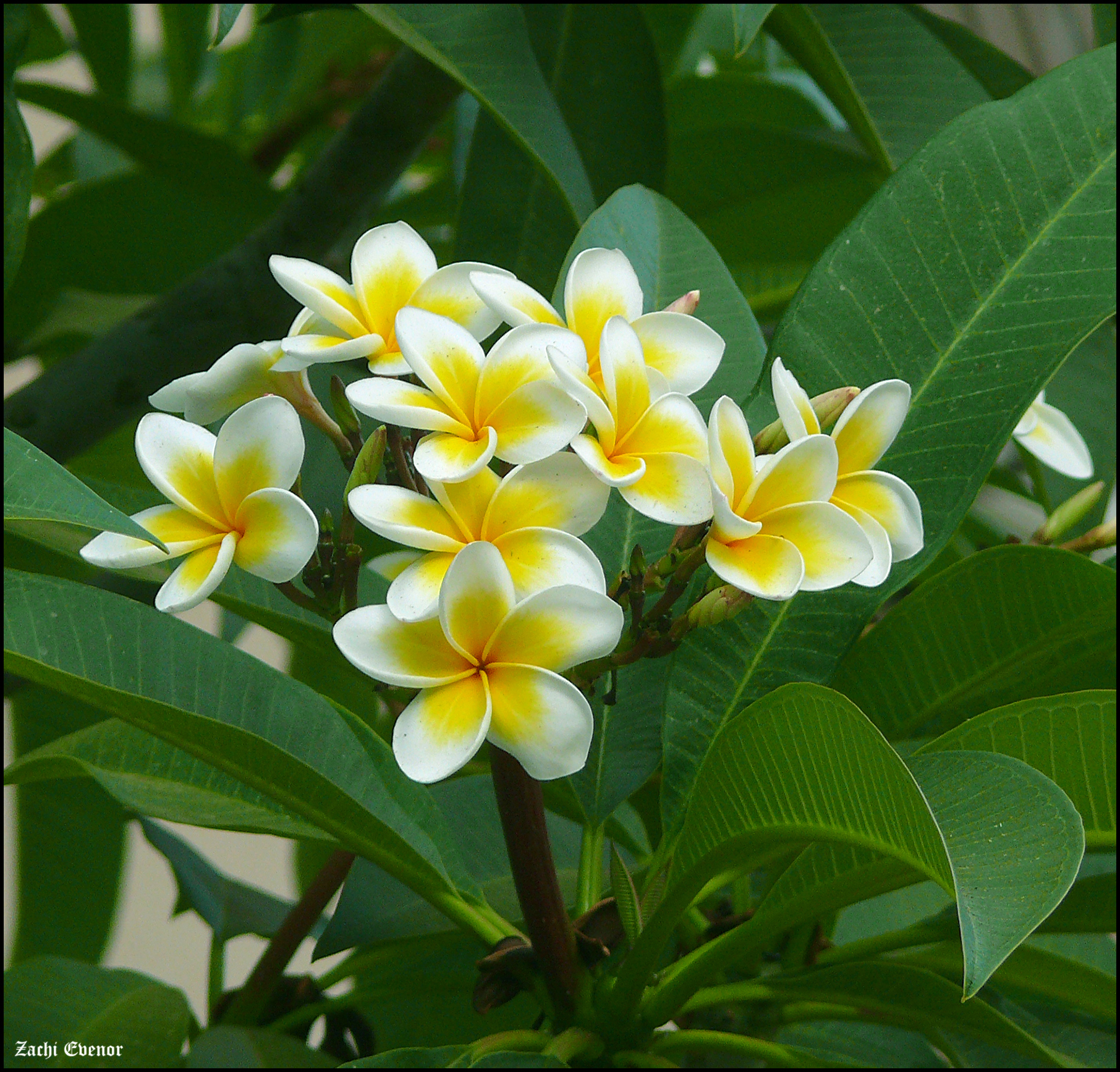 A native of central America, this small semi-evergreen tree is widely grown around the world where it is found in parks, cemeteries, and temples. Its distribution in the United States, however, is confined to coastal Southern California, Hawaii, and southern Florida. Frangipani has a single trunk with fleshy branches of similar length that grow in a candelabrum-like shape. The thick tapered leaves are twelve to twenty-two inches long, seven inches wide, are pointed at the tip, and are produced in clusters at branch tips. The five-petaled waxy flowers are exceptionally fragrant and are produced in terminal clusters in spring before the leaves appear. They may be white, red, yellow, or pink but the form with white petals and a yellow center is the most widely planted. The fruits grow in pairs and are long leathery pods six inches in length. Frangipani is a good choice for use as a patio tree and in containers as well as in gardens, street plantings, and parks. High salt and drought tolerance makes it suitable for seaside planting. In Hawaii the flowers are used to make leis because of their high color and fragrance retention. The branches contain a poisonous sap.
A native of central America, this small semi-evergreen tree is widely grown around the world where it is found in parks, cemeteries, and temples. Its distribution in the United States, however, is confined to coastal Southern California, Hawaii, and southern Florida. Frangipani has a single trunk with fleshy branches of similar length that grow in a candelabrum-like shape. The thick tapered leaves are twelve to twenty-two inches long, seven inches wide, are pointed at the tip, and are produced in clusters at branch tips. The five-petaled waxy flowers are exceptionally fragrant and are produced in terminal clusters in spring before the leaves appear. They may be white, red, yellow, or pink but the form with white petals and a yellow center is the most widely planted. The fruits grow in pairs and are long leathery pods six inches in length. Frangipani is a good choice for use as a patio tree and in containers as well as in gardens, street plantings, and parks. High salt and drought tolerance makes it suitable for seaside planting. In Hawaii the flowers are used to make leis because of their high color and fragrance retention. The branches contain a poisonous sap.
Type: Small, semi deciduous tree
Outstanding Feature: Very fragrant flowers
Form: Domed
Growth Rate: Slow
Bloom: Five petaled, waxy flowers are fragrant and may be white, pink, red, or yellow; produced in spring before the leaves in terminal clusters.
Size: 20-26’ H x 12-26 W
Light: Full sun to light shade
Soil: Average, moist
Hardiness: Zones 10-11
Care: Debris can be a problem in summer and fall
Pests and Diseases: Susceptible to mealy-bugs, caterpillars, and rust
Propagation: Cuttings.
